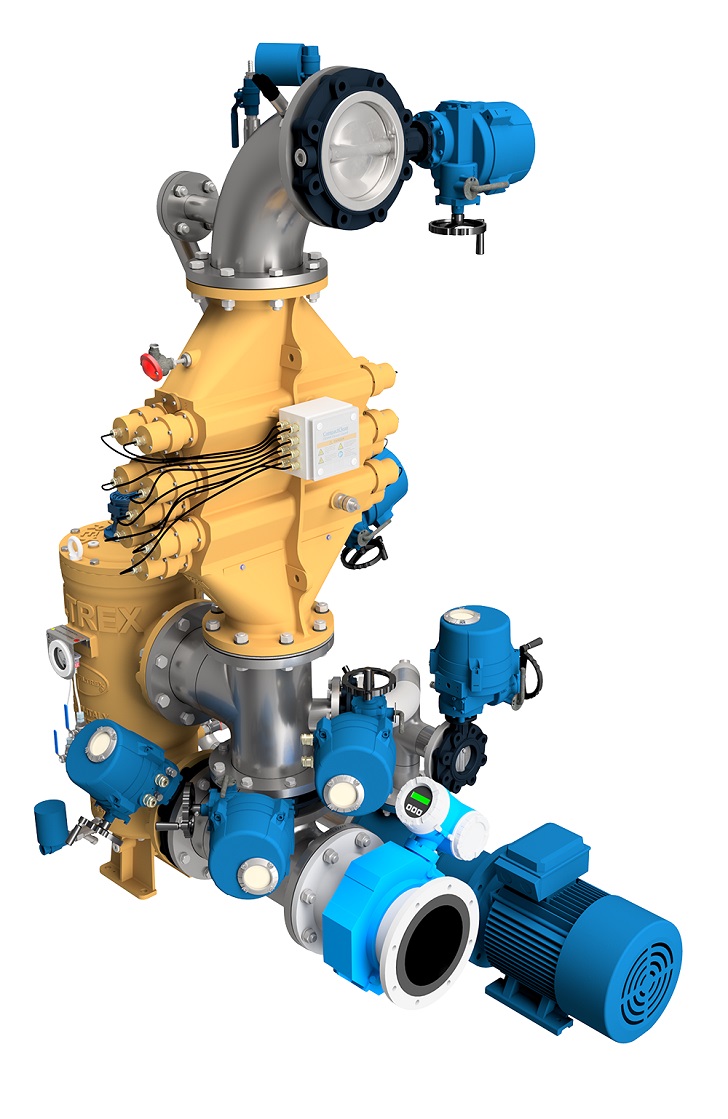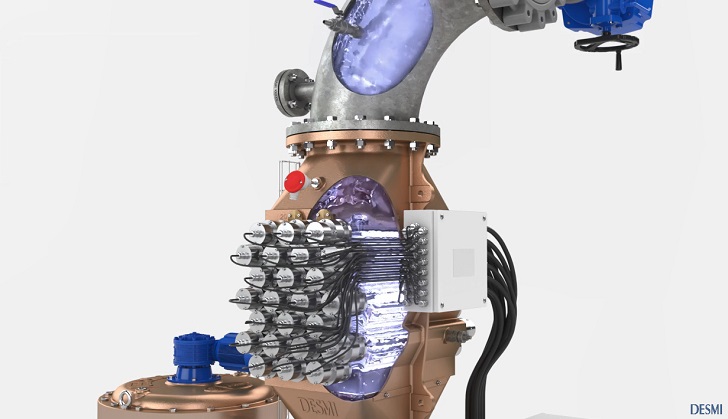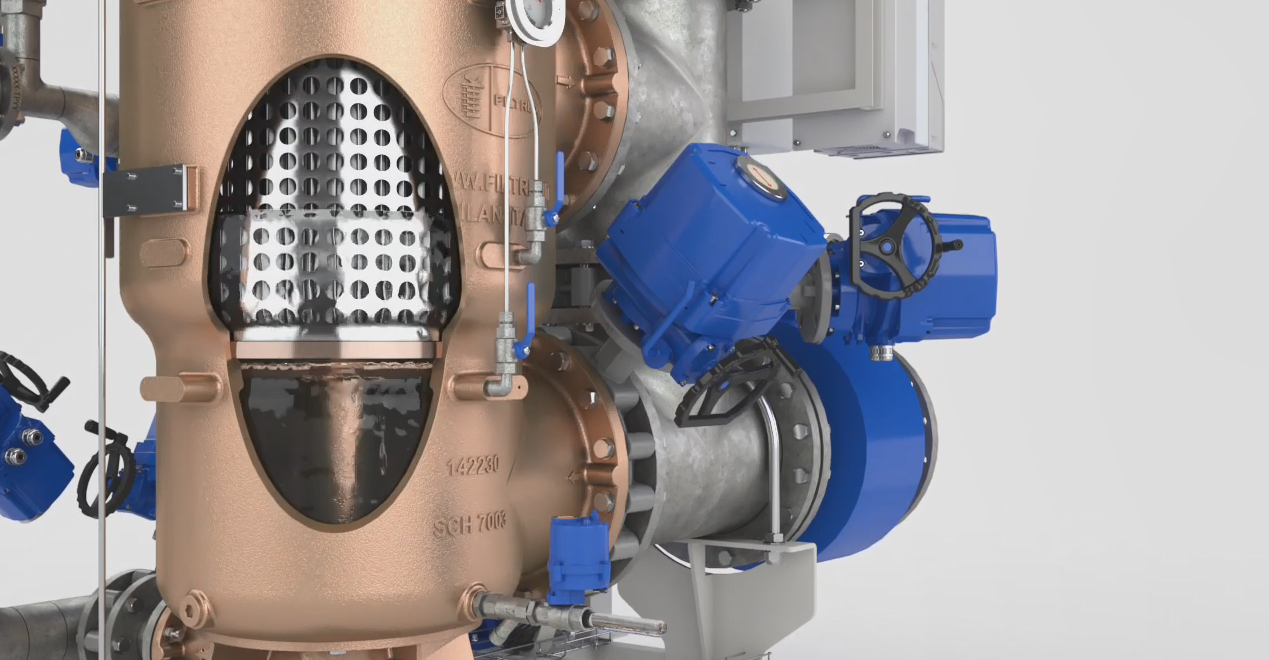


Choosing the right materials for the new system is a crucial part of any pump design. No more so than for the DESMI CompactClean is a UV-based ballast water management system that would require very little space yet deliver high flow rates.
Desmi has gained a solid reputation over the years for selecting exactly the right materials for its products to withstand the damaging effects of harsh environments.
Desmi Ocean Guard, part of the DESMI group of companies, provides solutions that overcome the challenges of treating ballast water for vessels sailing from one region of the world to another. In 2016, work began to develop DESMI CompactClean, a UV-based ballast water management system that would require very little space yet deliver high flow rates. And the careful choice of materials for the new system was to be a crucial part of the design journey.
Desmi Ocean Guard technical manager, Mark Kalhøj Andersen, picks up the story: “We actually started from scratch again, working with three models: a computational fluid dynamics (CFD) model, a particle model and a light distribution model that enabled us to spread the UV light in an optimal way throughout the water being processed.
This would enable us to treat organisms in the water not only so they would be damaged to the point where they were unable to reproduce, but to actually be killed outright far more quickly than other solutions in the marketplace. We also wanted the system to be extremely compact, produced in a skid-mounted version with everything on board, including the treatment system, pumps and cleaning-in-place module.”
When designing a system of this type, within a very short development timeline and with a long approval process ahead, diligently performing desk-based analysis is key. That requires the R&D team to test different approaches and prototype designs via a combination of reviewing available literature and computational modelling and experience. This is an area where DESMI’s technical teams excel, increasing the probability of arriving at a successful design, and keeping development costs to a minimum.
Material matters While the new solution’s functionality was, of course, of crucial importance, so was the ability to carry out the task of treating a vessel’s ballast water year after year with superb reliability, so ensuring it can smoothly sail from port to port. And, when it comes to reliability, few things matter more than the composition and durability of the materials chosen.
“When you’re designing any treatment solution, the cost of individual components is naturally an important consideration,” said Mark, “But we needed the right ones, and, in Desmi’s world, that means components that are highly applicable as well as highly reliable. This is something that has a lot to do with material choices.”
The Desmi R&D team re-visited every part of the design thinking from the earlier joint venture, departing from this thinking wherever it might make sense. For example, where the original intention had been to weld the unit’s casing, an attempt was made to cast and machine it instead, seeking to avoid issues encountered with tolerances in the previous welded prototypes. The attempt succeeded, enabling Desmi to adapt the unit to much more accurate tolerances than had been seen in the marketplace with competing products.
Mark commented: “With the basic design of the system in place, it was then time to decide on which materials should be used. These machines need to be able to withstand internal pressure up to 10 bars and they must be able to operate reliably in a harsh, corrosive marine environment.
Should we, for example, choose corrosive-resistant titanium, a material that could withstand almost any punishment thrown at it, or could we find a material that offered very high resistance yet cost somewhat less?”
Hard choices The choice narrowed down to two highly durable materials: super duplex stainless steel, a high-alloy duplex steel, or nickel-alu-bronze, which is a copper-based high-alloy. The cost of these two materials is quite similar, certainly when compared with far more expensive titanium. And they are similar, too, in their ability to handle corrosion.
But in a system where UV lighting increases the temperature of a sodium chloride solution (seawater), even if it’s only to 40 °C, corrosion becomes an even greater threat, requiring in-depth analysis of the two metals’ ability to withstand its effects.
Super duplex is less resistant to pitting than nickel-alu-bronze. Nickel-alu-bronze, on the other hand, is less resistant to erosion, a form of corrosion that can be a factor wherever high flow rates are involved. This risk was eliminated by the CFD analysis of maximum velocities. So, once all the analysis was complete, nickel-alu-bronze won the day, imposing fewer salinity or temperature constraints on the system than its rival.
IMO-approved Once a new, or significantly different, ballast water management system’s design is in place, the manufacturer is required to install it on a vessel, which then operates with the system for more than six months. The manufacturer must visit the vessel three times during this period to test the unit.
If all goes well, it is then able to be IMO-approved; a result that also demands 15 land-based tests in three different salinities (fresh, brackish and marine water), as well as environmental and scaling tests to show that all living organisms can be removed without harming the environment into which the water is discharged.
Aiming for a small-footprint system that uses a novel approach to ballast water treatment is a combination that has enabled Desmi CompactClean to meet and, with its ability to kill organisms within just two hours, to beat the USCG TA tests’ mandatory 24-hour holding time for ballast water before discharge. These capabilities, along with DESMI’s characteristic attention to detail in material choices, ensure the system will work as promised for years to come with minimal operating cost.



